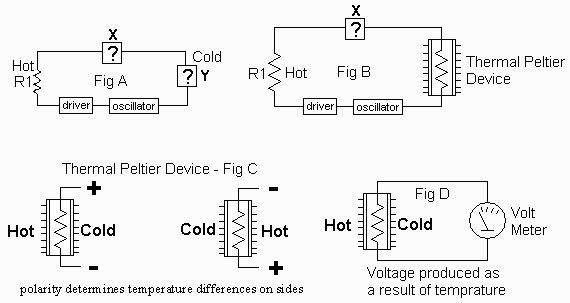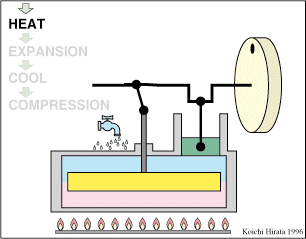Many times I think of things in a strange but particular and interesting way, I find it opens up other pathways of thinking outside the box. When I meet a challenge from a mechanical viewpoint I sometimes will convert this viewpoint to an electrical or electronic viewpoint which I can then understand the problem better. It's nothing new to make electronic circuits that will imitate mechanical devices. However I have stumbled into something which I am having trouble with and am in a sort of do loop and need some assistance.
The challenge was to produce an electronic equivalent circuit to imitate a Stirling motor.
At first I approached the problem from a refrigeration or heat pump device. Whereby a compressor; would by way of pressure changes a fluidic or gaseous movement produce both a hot coil and a cold coils thereby moving heat from one point to another most efficiently.

I immediately thought of several electrical equivalent electronic circuits of a mechanical device which would imitate such a simple process. But to my surprise, I could not come up with an equivalent component of the common "expansion valve", and it became difficult to figure out what could be used to create a cold side of such a circuit. The secret component was a "thermal Peltier device or junction" for the cold side, but an expansion valve is something else.

In Fig A, I began working out the problem rapidly for the hot side, easy, a resistor solved this. X-device is the expansion valve still in question. Y-device was the question which turned out to be a thermal Peltier device. But then I ran into a new problem. The Peltier device produces both hot and cold in the same device, in essence it is a self contained refrigeration/heat pump all it's own from an electronic standpoint. Opp's back to the drawing board on that one.
Anyway; as I was mentioning. The idea is to create an electronic equivalent circuit to imitate a Sterling motor.

I figure it's a basic oscillator with regeneration. Any idea's?
Why do it, because if a mechanical device such as Stirling Motor has such a high efficiency ratio can you imagine what an equivalent electronic circuit could be??
I'm open to thoughts....